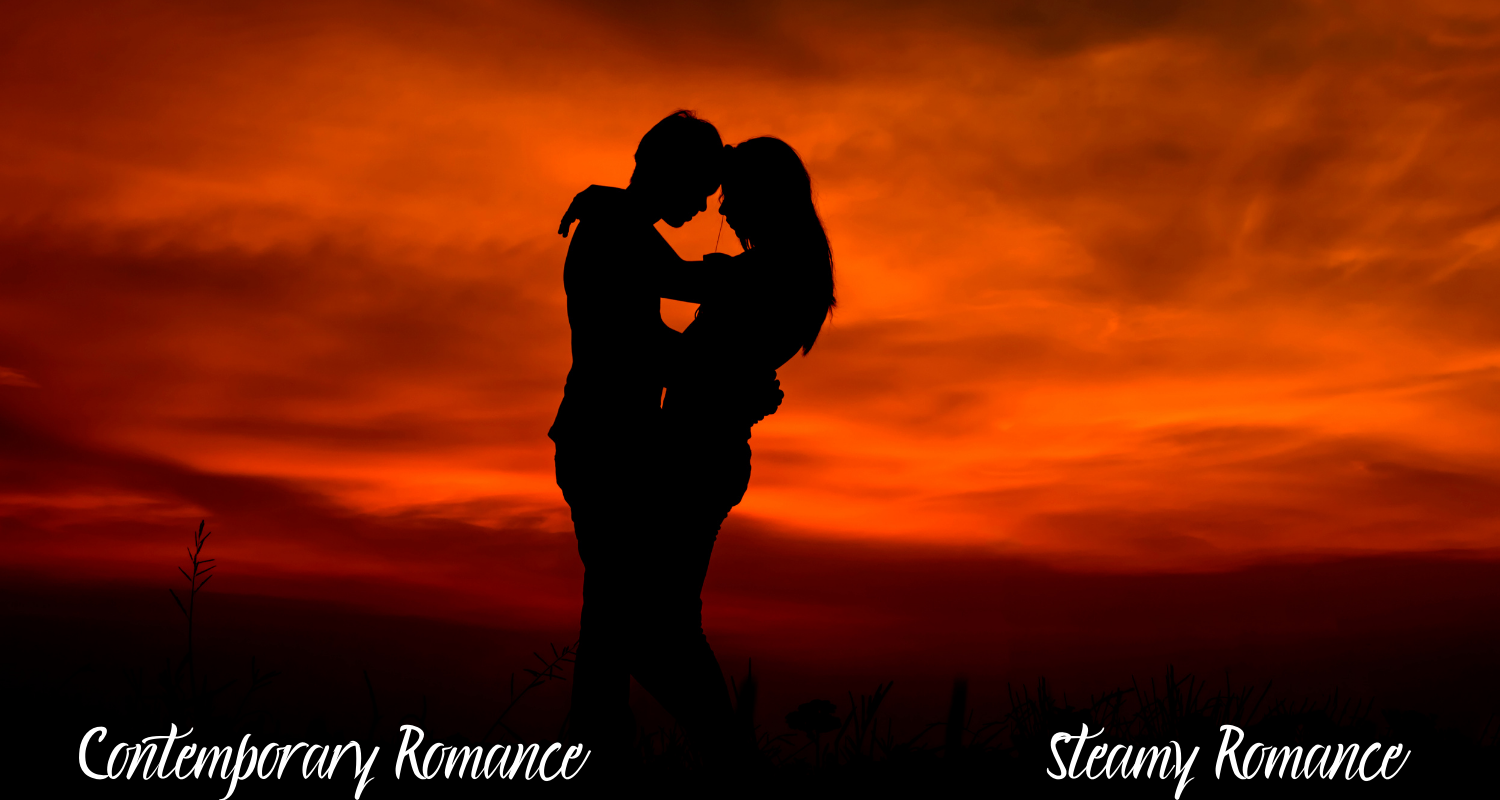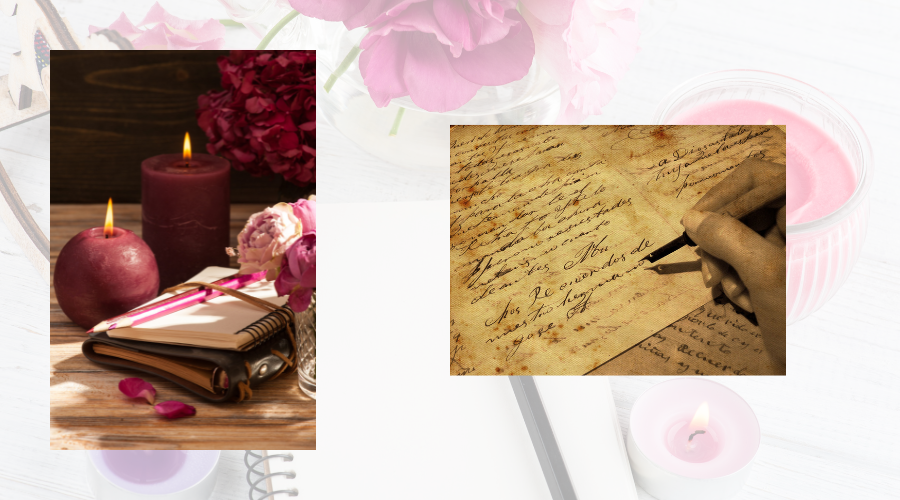Key Takeaways:
Pursue your passion! There's no time like the present to get started writing your first book or your next book.
- Romance writing – no matter the genre or trope – is an art form that you must perfect to engage your readers.
- Creating authentic characters and believable scenes can help move the story along and keep your readers' interest.
- Don't forget the details!
Romance writing is one of the most loved literary genres. It is rich in history and has a vast readership as it captivates hearts and imaginations everywhere. From timeless tales of love and passion to contemporary stories that explore the complexities of modern relationships, romance novels offer readers an escape into worlds where love conquers all.
It is crucial for aspiring authors to understand the art and craft behind romance writing if they want to create compelling and emotionally resonant stories. In addition to weaving a tale of love, it's also about developing authentic characters and believable conflicts in order to deliver satisfying resolutions. These elements require creativity and a strong appreciation for the nuances that make romance novels enchanting.
Unveiling the Essence of Romance Writing
Romance writing delves into the deepest emotions of love, desire and connection. A romance novel is about the journey of two or more characters finding their way to each other through various trials and tribulations. Understanding these fundamental themes is essential for creating a compelling love story.
Exploring Themes of Love, Connection and Desire
The profound connection between individuals, the transformative power of love and the desire for companionship are all themes that resonate with people all over the world. The themes are not just about physical attraction but are also about emotional and intellectual bonds that bring your characters together. A successful romance writer delves into the complexity of relationships and explores how love can inspire, challenge and change individuals.
Creating Compelling Protagonists and Believable Relationships
The heart of every romance is its characters. Creating relatable, multidimensional protagonists is crucial for engaging readers. Your characters must be flawed yet endearing. They must have fears, desires and personal growth arcs that make their journeys compelling. Just as important is the believability of their relationships.
The chemistry between the characters should be palpable. They should have interactions that reveal their personalities and deepen their connections. Authentic dialogue and genuine moments of intimacy build a bond that readers can root for.
Creating Immersive Worlds that Enhance the Romance Narrative
The setting for your romance novel is vital in shaping the story. Whether it's a quaint small town, a bustling city, or an exciting locale, the environment should enrich the narrative and reflect the character's experiences.
Immersive settings can heighten the romantic atmosphere, provide opportunities for meaningful encounters and serve as a backdrop for pivotal moments in the relationship. Adding descriptive details and vivid imagery can transport readers into the world you've created and make the romance more engaging and believable.
Balancing Conflict, Tension and Resolution in Romance Plots
A well-crafted romance plot balances conflict, tension and resolution to keep readers invested. The path to love is rarely smooth. The challenges your characters face are imperative for driving the narrative forward.
Internal and external conflicts should be realistic and significant enough to test the characters' love and commitment. Tension should be built gradually to keep readers on the edge of their seats and eager to see how the characters will overcome their obstacles. The ultimate goal should be satisfying and should provide a sense of closure and emotional fulfillment.
Mastering the Techniques of Romance Writing
Romance writing is an intricate dance of dialogue, emotion and sensory detail. You must master several key techniques to captivate your audience.
Using Conversation to Deepen Relationships and Reveal Character
One of the most powerful tools in romance writing is dialogue. It brings your characters to life and allows their personalities, emotions and intentions to shine through. Effective dialogue drives the plot and deepens the relationship between characters. Creating captivating conversations involves:
- Authenticity: Your dialogue should sound natural and reflect the characters' unique voices. Each character should have their own way of speaking, influenced by their background, personality and emotional state.
- Subtext: Subtext adds depth to conversations. What your characters don't say can be as important as what they do say. Subtext allows for tension and subtlety, making interactions more intriguing.
- Conflict and Resolution: Incorporate moments of conflict and resolution within the dialogue. These exchanges reveal vulnerabilities, build intimacy and move the relationship forward.
- Purpose: Each piece of dialogue should serve a purpose, whether advancing the plot, revealing character, or deepening the emotional connection between the characters.
Evoking Emotion Through Vivid Sensory Descriptions
Sensual imagery is also important in romance writing. It creates an immersive and emotionally charged reading experience. When you engage the senses, you can evoke powerful emotions and draw your readers into the world of the characters. To effectively use sensual imagery:
- Create Detailed Descriptions: Describe settings, characters and interactions with specific and vivid details. Paint a picture that your readers can see, hear, smell, taste and touch.
- Emotional Resonance: Tie sensory descriptions to the characters' emotional states. Describe the softness of a touch during a tender moment or the sharpness of a scent that brings back a memory.
- Create Balance: Be careful that you don't overwhelm the reader with too much detail. Choose sensory elements that enhance the scene and contribute to the overall atmosphere.
- Use Symbolism: Sensory details can symbolically reinforce themes and emotions. A blooming garden can symbolize the blossoming of love, while a storm can reflect inner turmoil.
Keeping Readers Engaged with Dynamic Storytelling
Pacing and tension are crucial for maintaining reader engagement in a romance novel. If a story is well-paced and has the right amount of tension, it keeps the readers turning the pages and eager to see how the characters' relationship unfolds. To master pacing and tension:
- Variety: Mix high-tension scenes with moments of calm and reflection to create a rhythm that keeps the story dynamic and prevents it from becoming monotonous.
- Cliffhangers: End chapters or scenes with questions or unresolved issues to encourage readers to continue. Cliffhangers build anticipation and maintain interest.
- Conflict: Introduce and escalate conflicts to increase tension. They can be internal struggles, external obstacles, or misunderstandings with the characters' relationship. The conflicts should be meaningful and contribute to character development.
- Resolution: Be sure to balance the tension you create with satisfying resolutions, including moments of relief and fulfillment to allow characters and readers to breathe and enjoy the progression of the relationship.
When you master these techniques, you can create romance stories that are rich in emotion and vivid in detail. They are compelling and hold your readers' interest.
Navigating Subgenres and Tropes
One of the great things about the romance genre is that it's incredibly diverse and encompasses a wide range of subgenres and tropes. Knowing how to innovate within them is essential for any romance writer.
Some of the popular romance subgenres include:
- Contemporary Romance: Set in the modern world, these romance stories focus on realistic relationships and current issues. They feature relatable characters and everyday issues.
- Historical Romance: Set in the past, these stories transport readers to different eras, such as the American Wild West or Regency England. Including historical accuracy and period-appropriate details is crucial.
- Paranormal Romance: These novels blend romance with elements of science fiction or fantasy. They might include vampires, witches, werewolves, dragons and aliens. World-building and imaginative elements are key.
- Romantic Suspense: These novels combine romance with thriller elements, including mystery, danger and intrigue. The romance is usually intertwined with solving a crime or escaping peril.
- Erotic Romance: These romance novels focus on the sexual relationship between characters. They are explicit and emphasize physical intimacy. Character development and plot are essential to keeping the story engaging.
- Young Adult (YA) Romance: These novels target younger readers. They explore first loves and coming-of-age experiences. They often deal with themes of identity, personal growth and self-discovery.
Romance Tropes and How to Give Them a Fresh Twist
Romance tropes are plot devices and themes that readers love. Some of the common romance tropes include:
- Enemies to Lovers: The characters start with animosity and gradually fall in love.
- Friends to Lovers: Best friends who realize they have romantic feelings for each other.
- Fake Relationship: Characters who pretend they are in a relationship for various reasons then develop genuine feelings.
- Second Chance Romance: Former lovers reconnect and rekindle their relationship.
- Love Triangle: Three characters with complicated romantic entanglements.
These tropes are comforting and enjoyable, but if you give them a fresh twist, you can make your story stand out. Some twists might include:
- Subverting Expectations: Turn the trope on its head. In an enemies-to-lover, the characters might team up against a common enemy, deepening their relationship.
- Combining Tropes: Blend several tropes to create a unique storyline. For example, a fake relationship could turn into a second-chance romance.
- Adding Depth: Infuse tropes with deeper emotional and psychological layers. Explore why characters behave a certain way and how their past experiences shape their actions.
Tailoring Writing Techniques to Fit Specific Subgenres and Reader Expectations
Different subgenres come with specific reader expectations. They require tailored writing techniques:
- Contemporary Romance: Realistic dialogue, modern settings, relatable characters and steady pacing to reflect real-life relationships.
- Historical Romance: Historical accuracy in dialogue, setting and cultural norms. Rich period-accurate descriptions.
- Paranormal Romance: Strong, consistent world-building and supernatural elements blend seamlessly with the romantic plot.
- Erotic Romance: Explicit scenes with sensitivity that focus on character consent and mutual pleasure. Strong plot and character development.
- YA Romance: Age-appropriate language and themes. Intense teenage emotions, authenticity.
Research and Authenticity in Romance Writing
Authenticity is the key to drawing readers to your romance story. It makes them care about your characters and their journeys. Thorough research and incorporation of real-life experiences lend credibility and emotional depth to your story.
The Importance of Research in Creating Authentic Settings and Characters
Research is imperative for creating believable and immersive settings and characters. Accurate details enhance the realism of your story, which allows readers to engage with the world you built.
Understanding the setting is crucial, whether it's for a contemporary, historical or fantasy romance. For contemporary romance, research the location's culture, climate and landmarks. For a historical romance, research customs, fashion, language and societal norms that match the period. Fantasy and paranormal romances require consistent rules and characteristics for your fictional world.
If your characters have specific professions or hobbies, research these thoroughly. Make sure you understand the intricacies of their jobs or interests, as that adds authenticity to your characters' actions and dialogue.
Finally, when writing characters from diverse backgrounds, research their cultural practices, traditions and values.
Incorporating Real-Life Experiences and Emotions into Romance Narratives
When you draw from real-life experiences and emotions, you can significantly enrich your romance narratives. Authentic emotions resonate with readers and make your characters' journeys more relatable and compelling.
Reflect on your own experiences with love, heartbreak and relationships. Incorporate those genuine emotions to add depth and realism to your characters' interactions and growth. You can also observe real-life relationships and interactions or conduct interviews with people who have experienced situations similar to those in your story. These insights can help you authentically portray emotions and reactions.
Don't forget about empathy and imagination. Put yourself in your characters' shoes. Imagine their thoughts, feelings and motivations in various scenarios to help create nuanced and emotionally rich characters.
Balancing Realism with Fantasy in Romance Storytelling
While authenticity is important, romance writing often involves elements of fantasy and idealization. Balancing realism with fantasy ensures your story remains engaging and relatable. Even in paranormal or fantasy romance, your characters should experience realistic emotions and struggles. Their reactions should be grounded in human experience.
Conflicts and challenges should have relatable emotional stakes. Readers should be able to connect with the characters' desires, triumphs and fears.
While romance novels often involve idealized scenarios, keep a level of plausibility. Characters should face realistic obstacles and growth. Avoid overly convenient resolutions that undermine your story's credibility. Create a world and characters that are so compelling that your readers are willing to suspend their disbelief. Consistency in world-building and character behavior helps maintain this balance.
When you integrate thorough research, real-life experience and a careful balance of realism and fantasy, you can craft romance stories that are authentic and enchanting.
Creating Memorable Love Scenes
Love scenes are the cornerstone of romance writing. They offer readers moments of intimacy and emotional resonance that deepen their connection to the characters. Crafting love scenes requires a careful balance of passion, sensitivity and originality.
Your love scenes should be a natural progression of the character's emotional journey. Building up to intimacy should reflect their growing connection and mutual understanding. Engage the senses to create a vivid and immersive experience by describing sights, sounds, smells, tastes and textures. Allow the characters to be vulnerable during love scenes to deepen their bond and make the scene more meaningful and authentic.
Don't neglect the emotional aspects in favor of the physical descriptions. Balance them out by showing how characters think, feel and react emotionally during the encounter. Control pacing to reflect the intensity of the moment. Passionate moments should have a slower pace, and urgent or exciting moments should have a faster pace.
Tips for Avoiding Clichés and Creating Unique Romantic Moments
If you want your love scenes to stand out, avoid cliches. Instead, create fresh, unique moments. Phrases such as "heart-pounding" or "world-spinning" are generic and often overused. Instead, use specific, personalized descriptions that reflect the unique dynamics between your characters.
Use small, unique details that are meaningful to the characters, such as a shared memory, a private joke or a particular gesture that holds significance. Your characters should react in ways that are true to their personalities to make the scene feel authentic and tailored to their unique relationship.
Focus on character-specific reactions that are true to their personalities. Consider unique settings for love scenes – these settings can enhance the emotional impact. A place where the characters first met or somewhere that holds sentimental value often adds depth to your story.
Finally, go beyond the physical attraction. Explore original and unique connections and conflicts that could arise during intimacy to add layers to a scene.
Additional Resources
Book recommendations:
- Buck Hole Hollow: Sarah – by Rhea Morrigan. Sarah left Alaska to get away from a marriage arranged by her parents and moved to Kentucky -- and right into the arms of Julian, who seemed very sweet when they first got together. As soon as they moved in together, Sarah learned otherwise. She might as well have stayed in Alaska. After leaving Julian, she met Aiden Jackson. How is this relationship going to turn out?
- Kansas in Montana – by Raeann Blake. When Special Agent Kansas Malone swapped seats with a young girl—a veritable "Chatty Cathy"—she knew she was venturing into uncharted territory. Her empathy for the girl's sleep-deprived seatmate propelled her to act, even if it meant crossing the boundaries of protocol. Little did she know that this simple act of kindness would set off a chain of events that defied all expectations.
- The Beach House – by Rachel Hanna. She's 43 years old… and starting over from scratch. How did this happen? She had it all together. A stable marriage of two decades. Two grown daughters. And now she and her husband, empty nesters, were moving to a beach house. Until he showed up late one night and tore their marriage apart.






Comments